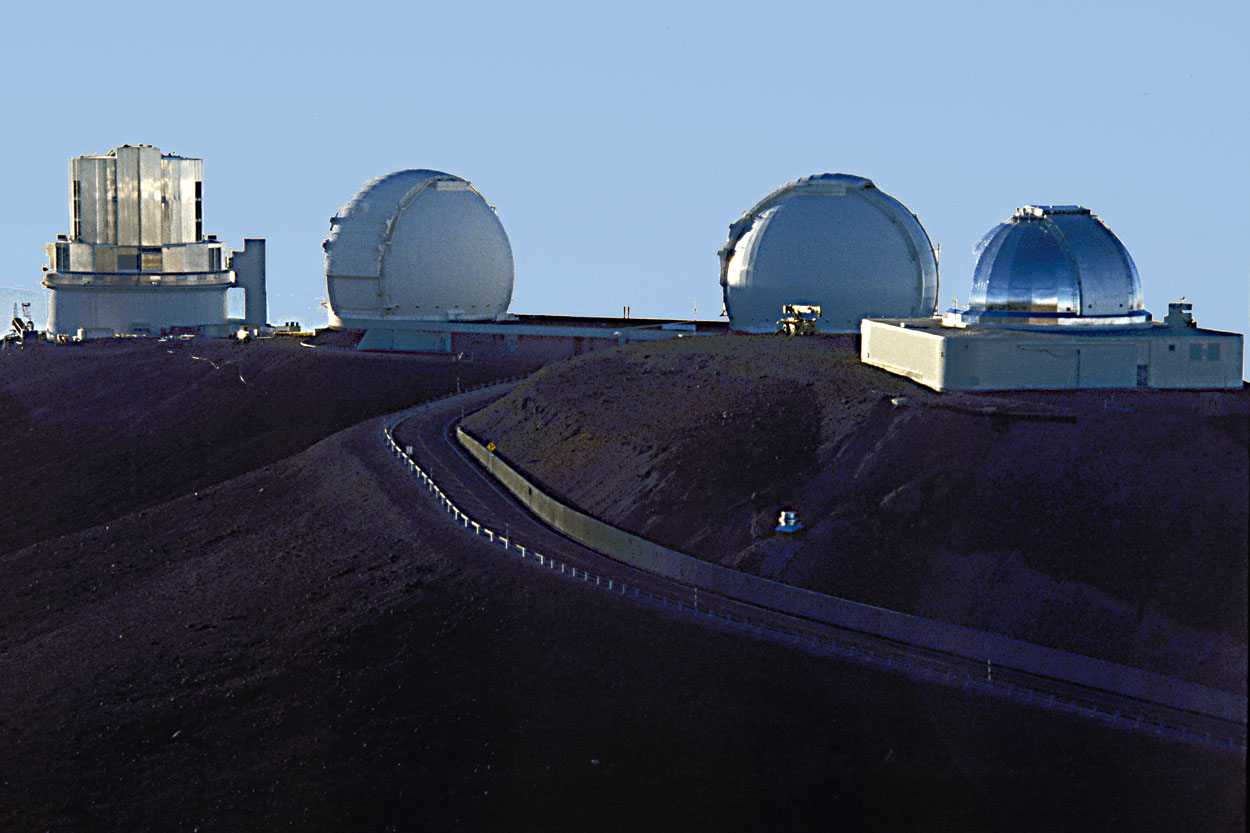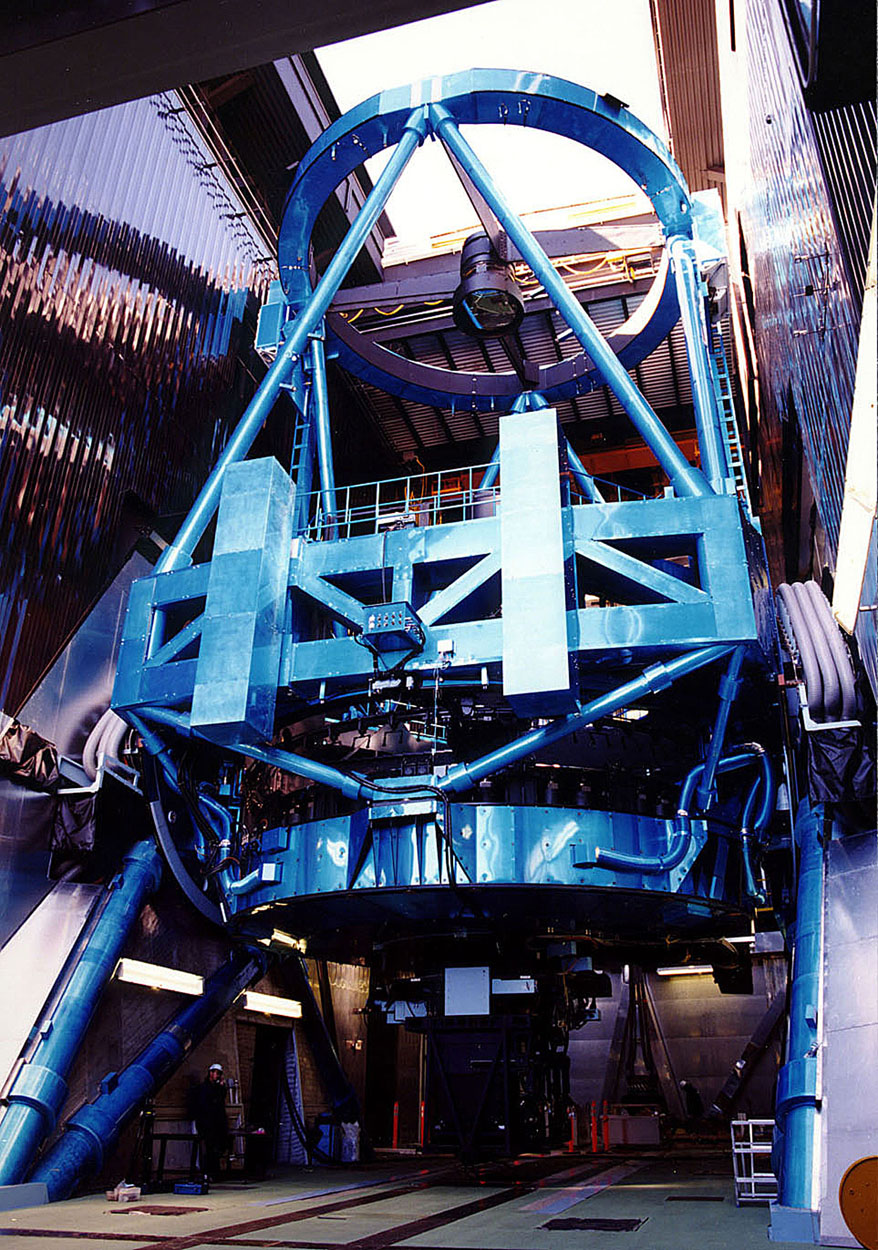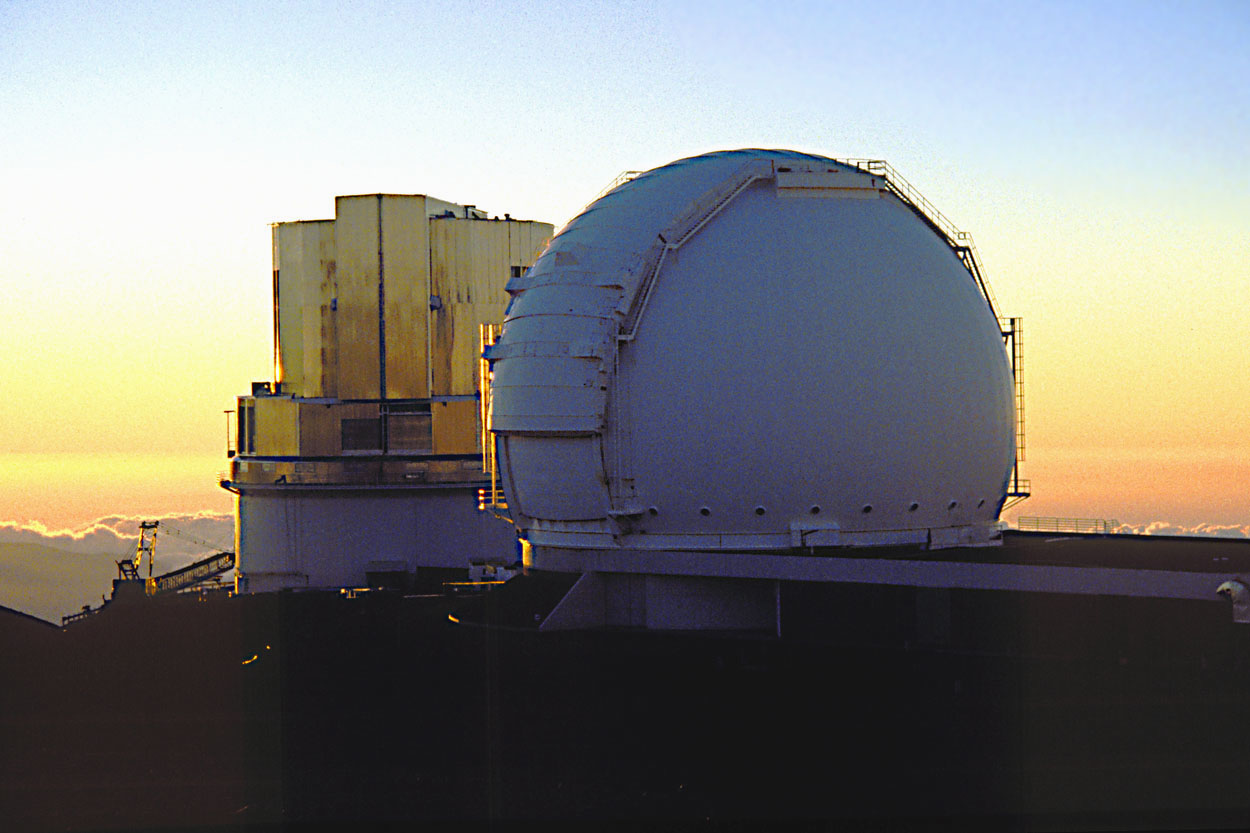|
Michael A. Stecker
Places Index
Astronomical Sites:
Keck I & II, IRTF and Subaru
.
Keck I and II Observatories
The W.M. Keck Foundation observatories are operated by the California Institute of Technology, the University of California, and the National Aeronautics and Space Administration (NASA). The Keck I telescope began science observations in May, 1993 and Keck II began in October, 1996. Both telescope use segmented primary mirrors of 10 meters (394 inches) diameter.
NASA Infrared Telescope Facility (IRTF)
The observatory belongs to NASA and has been operated and managed for NASA by the University of Hawaii Institute for Astronomy since 1979. The IRTF is a 3.0 meter telescope, optimized for infrared observations. The IRTF is the U.S. national infrared observing facility and is open to the entire astronomical community. |
 From left to right are the Subaru Telescope, Keck I Telescope, Keck II Telescope and NASA Infrared Telescope. |
|
|
|
The Subaru Telescope
 The Subaru Telescope is operated by the National Astronomical Observatory of Japan (NAOJ). It is a new generation telescope not only because of its large 8.2 meter (327 inch) mirror, but also because of the various revolutionary technologies used to achieve an outstanding observational performance. An active support system that maintains an unprecedentedly high mirror surface accuracy, a new dome design to suppress local atmospheric turbulence, an extremely accurate tracking mechanism using magnetic driving systems, seven observational instruments installed at the four foci, and an auto-exchanger system to use the observational instruments effectively are just some of the unique features associated with this telescope. These sophisticated systems have been utilized and fine-tuned since first light. |

Subaru Telescope
Aperture: 8.2 meters (327 in)
Operator: National Optical Astronomical Observatory of Japan (NAOJ)
Operational: 1999
Primary use: Optical/Infrared
|
|
|
